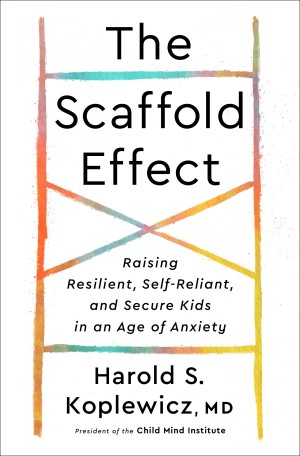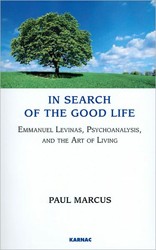By
– January 5, 2012
Anti-Semitism may be the oldest and most persistent social pathology, what historian Robert Wistrich calls “the longest hatred.” There is a ready market for anti-Semitism, religious and social, ancient, medieval, modern, and now postmodern. Cultural and literary critic George Steiner attributes this perpetual hatred of the Jews to their “invention of conscience.” That is how he characterizes Moses’ demand for obedience to law, Jesus’ demand for love and sacrifice, Marx’s demand for perfect justice and Freud’s demand for honest self-knowledge. That these standards for perfection are unfullfillable is the source of deep and bitter resentment of the people who “devised” them. Others say it is because Jews have chosen to be “a people who dwells apart,” as the Biblical pagan prophet Balaam proclaimed, unwilling to assimilate or submerge their identity. From ancient times through the centuries of Christian hegemony in Europe, and Muslim hegemony in the Middle East, resentment and even hatred of the Jews grew out of their commitment to their own religion and their rejection of two of the major world religions, Christianity and Islam. Walter Laqueur, for thirty years the director of the Wiener Library in London, the leading institute for the study of anti-Semitism, provides a succinct and cohesive historical account of this phenomenon. In The Changing Face of Anti-Semitism he argues that during the 1500 years of Christian hegemony in Europe, the roots of that hatred were religious and theological. In the modern era, the hatred sprang from religious roots secularized, with the Jewish difference being more and more attributed to race and ideology. He skillfully demonstrates the unique tenacity of anti-Semitism with an enduring and historical reach that even affected democracies in Europe and the United States.
Common to both religious and secular forms of anti-Semitism is the persistence of certain myths that over the centuries demonized and dehumanized the Jewish people. No matter how absurd and irrational, these myths, which portray the Jews as the source of evil and corruption, attracted many believers even among the educated, and provoked and justified persecution, expulsion, massacre, and genocide. Marvin Perry and Frederick M. Schweitzer in Antisemitic Myths collect over ninety documents that focus on the nature, evolution, and meaning of the principal myths that have made anti-Semitism such a lethal force in history: Jews as deicides, ritual murderers, agents of the devil, international conspirators, and materialistic, unscrupulous Shylocks. In their comprehensive and invaluable collection of primary sources, they demonstrate that anti-Semitism is one of the great constants of Western civilization. The opponents of nationalism saw Jews as uncompromising nationalists, with a nationalist God and a nationalist Torah; the nationalists saw Jews as internationalists with allegiance to no country. Political liberals denounced the Jews as an instrument of reactionary and Pharisaic authority; political reactionaries denounced them as agents of change. Religious Christians blamed Jews for killing Jesus and for their interest in reason, science, and inquiry; and the free thinkers accused them of superstitious and religious fanaticism. Some writers saw the Jew as the root of anarchy, Marxism, immorality, and subversion, while some radicals and social reformers described the Jew as characterized by selfinterest, materialism, and greed. What strikes the reader of these documents is the unique intensity of Jew hatred, the irrational fear of the Jews and the almost limitless allegations of Jewish evildoing and capacity for crime and destruction. Even after the Holocaust, these myths continue to circulate, particularly in the Muslim world, which has enthusiastically embraced medieval Christian, modern European, and Nazi anti- Semitic myths. In a world in which difference is increasingly a source of conflict, the otherness of the Jew, so ably documented in this book, appears salient and pernicious.
Both Laqueur and Perry and Schweitzer extend their treatments of the evolution of anti-Semitic history and myths to include the current resurgence of anti-Semitism on a global scale and often in unabashedly open forms. That such virulent hatred persists today, sixty years after the Shoah, is quite disturbing and is the focus of Michael Berenbaum’s edited book, Not Your Father’s Antisemitism: Hatred of the Jews in the 21st Century and Avner Falk’s Anti-Semitism: A History and Psychoanalysis of Contemporary Hatred. They explore the reasons why anti-Semitism is flourishing today. Berenbaum’s book, resulting from a conference sponsored by the Sigi Ziering Institute Exploring the Religious and Ethical Implications of the Holocaust held at the American Jewish University, is uneven in quality and in thematic coherence. Some of the book’s weaker and idiosyncratic contributions are, in fact, authored by the editor. Notwithstanding these deficiencies, the reader will find in many of the chapters interesting descriptions andanalysis of contemporary anti-Semitism in Europe, the United States, on the political right and on the left; reflections on the growing crescendo of voices questioning Israel’s very right to exist; on the re-appearance and proliferation of medieval blood libels in the mainstream Muslim press; on the physical attacks on rabbis and school children in France and Canada; on the conflation in the European press and in political rhetoric equating Israelis and Nazis; and on the growth of Holocaust denial and Holocaust trivialization. The book’s strongest chapters deal with anti-Semitism in Islam and Israel and contemporary anti-Semitism. There are very suggestive pieces by Richard L. Rubenstein, John Roth, Reuven Firestone, and Manfred Gerstenfeld, among others. The book’s authors generally argue that contemporary hatred of the Jews is not linked to the 1930’s but is a unique manifestation of the 21st century post-modernist crisis. This leads many of the seventeen contributors to conclude that the new anti-Semitism presents, for the first time since the Shoah, an existential threat to the Jewish people.
Avner Falk in Anti-Semitism: A History and Psychoanalysis of Contemporary Hatred, agrees with this worrisome conclusion in his comprehensive and quite eclectic examination of this worldwide phenomenon. Falk delves deeply into the history and literature of anti-Semitism, as well as current events, integrating insights from psychology, sociology, anthropology, political theory, and psychoanalysis. Falk brings to the topic both a broad and deep knowledge and appreciation of what these disciplines can contribute to the topic. His knowledge and insights are impressive and quite suggestive. The result is a rich and important exploration of what he believes are the irrational and unconscious causes of anti-Semitism. These are revealed in fascinating chapters on the psychodynamics of racism, fascism, Nazism and the dark, unconscious processes, both individual and collective, that led to the Shoah. He extends this analysis to include a discussion of the psychological motives behind Holocaust denial as well as insights into the survival strategies of Holocaust survivors.
The current growth of anti-Semitism is fueled by the Palestinian-Israeli conflict and the transformation of that essentially political conflict into something more sinister and even religious in nature; by the growth and migration of Muslim populations in Europe; by the insecurity of the post-Cold War international era; by the regional inequities created by globalization; by a faltering world economy; and by the rise of radical Islam that has defined the principal enemy of Islam to be the “Satanic” United States and its “little Satan” partner, the conspiratorial Zionists who are blamed for the suffering in the Muslim world. Once again, the power of the irrational rears its ugly head.
The “longest hatred,” sadly, is alive and well. Anyone wanting to understand its history and persistence, its continuities and changes, would do well to read these books. They provide, to varying degrees, sober, penetrating, and compelling analysis and the hope that a solution to this phenomenon is not beyond our willingness to confront it boldly and with knowledge.
Additional Books Featured in Review
Michael N. Dobkowski is a professor of religious studies at Hobart and William Smith Colleges. He is co-editor of Genocide and the Modern Age and On the Edge of Scarcity (Syracuse University Press); author of The Tarnished Dream: The Basis of American Anti-Semitism; and co-author of The Nuclear Predicament.




